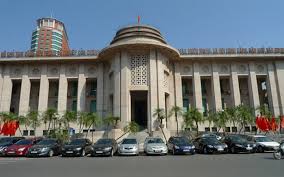 Economy
Economy


|
| The headquarters of the State Bank of Việt Nam in Hà Nội. Credit institutions which are given weak rankings for two consecutive years will be placed under the SBV's special control. — Photo SBV |
HÀ NỘI — The State Bank of Việt Nam (SBV) has issued a circular regulating special control for credit institutions.
Under Circular 11/2019/ TT-NHNN, which will take effect of October 1 this year, credit institutions (excluding policy banks) that fall into one of the following seven cases will be placed under the SBV’s special control.
First are credit institutions facing a shortage of highly liquid assets at 20 per cent or more at the time of solvency ratio calculation which causes them to fail to maintain the solvency ratio for three consecutive months.
Second, the list includes credit institutions that cannot pay their debt obligation within one month of the date of maturity and have a ratio of bad debts out of the total outstanding loans at 10 per cent or more.
Third, if the Tier I capital adequacy ratio of credit institutions is lower than 4 per cent for six consecutive months while the ratio of the bad debts to the total outstanding loans is 10 per cent or more after six consecutive months, the institution will be subject to the SBV's special control.
Next, the special control will apply for institutions that cannot repay their debt obligation within three months from the date the debt obligation is due.
If the accumulated losses of a credit institution are greater than 50 per cent of their charter capital and reserve funds recorded in the latest audited financial statements, they will be subject as well.
If the capital adequacy ratio is not maintained for 12 consecutive months or the capital adequacy ratio is lower than 4 per cent for six consecutive months, the SBV will institute special control.
And finally, credit institutions will be subject to the control if they are given a weak ranking for two consecutive years according to the SBV’s regulations.
Notably, the circular also requires that when credit institutions fall into the first four cases, they must promptly report to the SBV on the situation, causes and any measures they have taken or proposal to overcome the shortcomings.
Based on the situation and risk level, the SBV’s Governor or the directors of SBV’s branches will decide whether to put the credit institution under the SBV’s special control. — VNS




